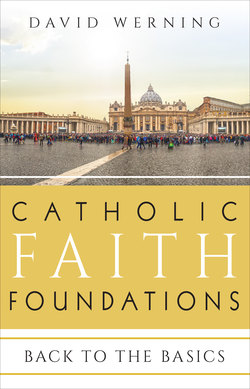Читать книгу Catholic Faith Foundations - David Werning - Страница 8
На сайте Литреса книга снята с продажи.
ОглавлениеPart 3
Renata Sedmakova / Shutterstock.com
Scripture and Tradition
The Catholic Church has proclaimed from its beginning that the Christian faith is handed on through both sacred Tradition and sacred Scripture. Some Christian traditions maintain that all revealed truth is handed on through Scripture alone (sola scriptura). The Catholic Church, in contrast, has always maintained that the one wellspring of divine revelation is communicated through two fonts: sacred Tradition and sacred Scripture. The Church notes that, before there were written Scriptures, the Christian community (and the Jewish community, too) handed on God’s word through preaching.
Saint Paul wrote to the Thessalonians saying, “Stand firm and hold fast to the traditions that you were taught, either by an oral statement or by a letter of ours” (2 Thes 2:15). Implicit in Paul’s words (and something he reminds people often) is the authority he has as an apostle to hand on the authentic teaching about Jesus and the Church.
Today the Church continues Paul’s service through its teaching office, the Magisterium. The Magisterium is a gift that has as its main purpose to protect the deposit of faith which has been handed on through sacred Tradition and sacred Scripture. One can imagine the confusion which would result in a community without such a teaching authority. To appreciate its function, however, one must be clear about how the Church defines sacred Tradition and sacred Scripture.
By “Tradition,” the Catholic Church means all that the apostles handed on from their experience of Jesus and from what they learned by the inspiration of the Holy Spirit. This includes their rich Jewish heritage and the blessings they received as they practiced their faith in Jesus after he had ascended into heaven (see Catechism of the Catholic Church, 83).
Obviously the Gospels and the other parts of the New Testament were not written until after the events of Jesus’ life. The apostles on their missionary journeys would hand on orally the content of the Faith: the words and deeds of Jesus, his interpretation of the Hebrew Scriptures, the signs he performed, etc. Moreover, the Faith was not only proclaimed but also celebrated when the people gathered together in the breaking of the bread (what we call the Mass). When there were disagreements, the apostles met in the Holy Spirit to resolve them. The Council of Jerusalem was the first such meeting, at which the question of how gentile converts became members of the Church was posed and answered (see Acts 15).
The Early Church
Very soon it became evident that Jesus was not going to return as quickly as the early Church thought, so the evangelists and the other authors of the New Testament decided to put into writing all that they had witnessed and learned. Obviously, though the modes of transmission differed, the content remained inspired. In order to resolve conflicts concerning authentic content, the early Church would meet and pray to the Holy Spirit for a resolution as it did at the Jerusalem Council. In fact, the apostles established the office of bishop precisely to protect the deposit of faith, which led to the Magisterium, as we shall see after considering sacred Scripture.
